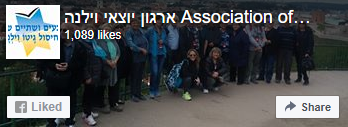Medicine
It was under these conditions that the Ghetto Health Department was forced to work; organising and supervising health services. It was managed by five doctors under the leadership of Judenrat member Shabtai Milkonovicki.
The ghetto hospital had internal medicine and surgical departments, a children's ward and laboratories including an X-ray department. About 180 people worked in the hospital; doctors, nurses and technicians. In 1942 over 3,000 people were hospitalised. From February 1942, following the German decree forbidding births in the ghetto, the gynaecology department operated in secret. There was a secret labour ward in the hospital and the babies born were hidden and nursed by their mothers in a melina in the hospital. As the babies got older they were registered as having been born prior to the decree.
The clinic in the ghetto was open twenty four hours a day; it had general practitioners, specialists, dentists and a pharmacy. A committee of three doctors could release workers for reasons of illness. Hundreds of people visited the clinic everyday, mostly in the evening when they returned from work.
A sanitation and epidemiology unit in the hospital dealt with infectious diseases. It was known as the "Investigative Department" out of fear that the Germans would murder the patients. The unit was responsible for the cleanliness of the ghetto and its inhabitants; it supervised the restaurants, soup kitchens and bakeries. Collective punishment was meted out to infected apartments. The ghetto inhabitants did not receive a ration card unless they presented a permit from one of the two bathhouses stating that they had washed at least once in the past month. A laundry and hairdresser was established for workers and school children as well as tea houses where it was possible to obtain hot water – initially free and later for a small payment. Public health programmes were established, notices advising the public how to look after their health were published and lectures were held on the subject of avoiding infectious disease. Medicines were smuggled into the ghetto and they produced various generic drugs and vitamins to supplement food, primarily for children.
Thanks to the health services no epidemics broke out in the ghetto despite the difficult conditions. In 1942, 522 people died in the Vilna Ghetto, 2.9% of the ghetto population; a low mortality rate relative to other ghettos.
From: Yad Vashem
For further reading: Beinfeld S, Health care in the Vilna ghetto.

